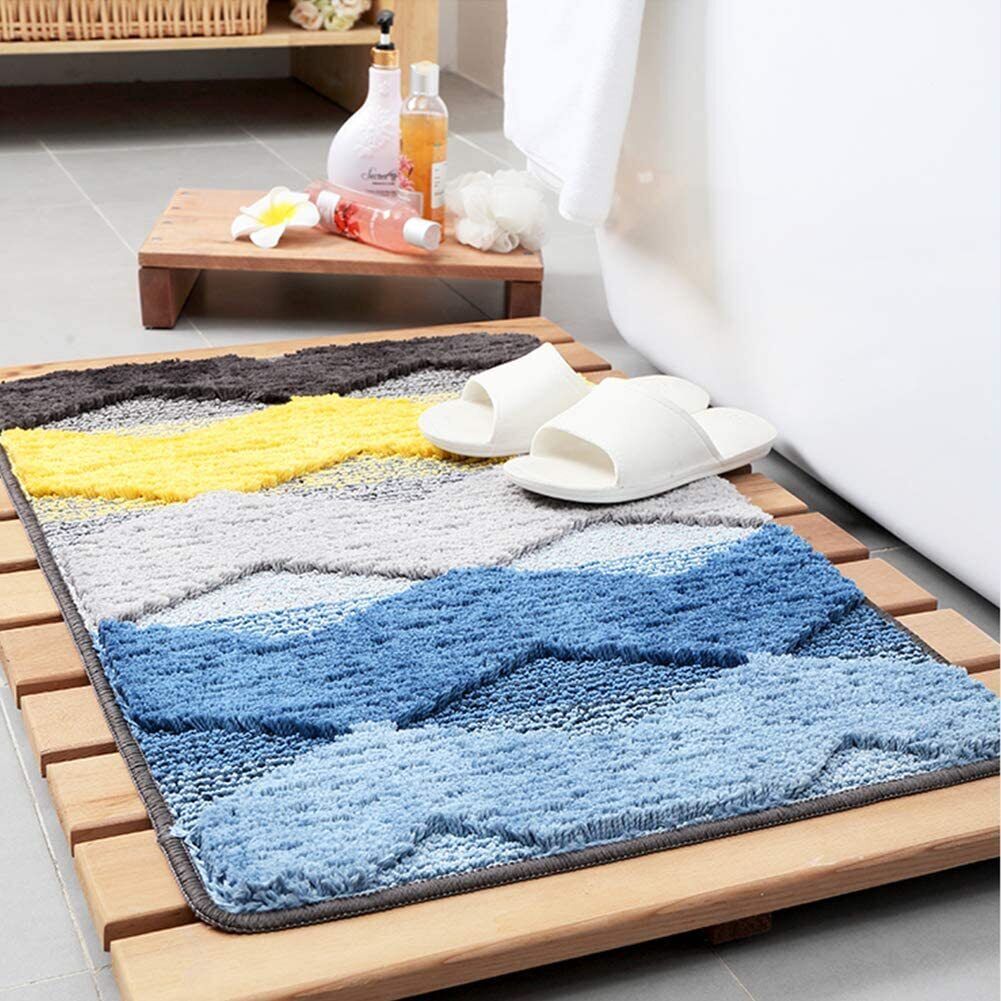
Mats have been used by humans for thousands of years, with evidence of woven mats dating back to ancient Egypt. These mats were made from plant materials such as reeds, grasses, and rushes, which were woven together to create a durable and flexible surface. These mats were used for a variety of purposes, including floor coverings, sleeping mats, and decorative wall hangings.
The earliest mats were likely made from natural materials that were readily available in the local environment. In ancient Egypt, for example, papyrus was a common material used for mats and other woven goods. In other cultures, grasses, rushes, and even animal hides were used to make mats. Over time, mats have been made from a wide range of materials, including bamboo, wool, cotton, and synthetic fibers.
Mats were used for a variety of purposes throughout history. In addition to being used as floor coverings and sleeping mats, mats were also used as decorative wall hangings in many cultures. In some societies, mats were also used as seating surfaces and were placed on top of chairs or benches to provide a more comfortable and insulating surface.
In Japan, tatami mats have been used as flooring for centuries. The standard size of a tatami mat is 1.91 meters by 0.91 meters, and these mats are typically made from rice straw and woven rush grass. Tatami mats are an important part of Japanese culture and are often used in traditional Japanese homes, tea rooms, and martial arts dojos.
The word “mat” comes from the Old English word “matt,” which means “coarse grass.” This word likely originated from the use of grasses and rushes in the production of early mats. Today, the term “mat” refers to a wide range of products, including floor mats, yoga mats, car mats, and doormats.
The largest mat in the world is the Giant Mat of Echizen, which measures 19.6 meters by 5.5 meters. This enormous mat was created by weaving together thousands of pieces of tatami matting, and was unveiled in 2007 as part of an art project in Japan. The mat was designed to symbolize the idea of “unity in diversity,” and serves as a testament to the enduring popularity and versatility of mats as a cultural and practical object.
Mats have been used as a form of currency in some cultures due to their practical value. In ancient Micronesia, for example, mats woven from pandanus leaves were used as a form of currency because they were a valuable commodity that could be traded for other goods and services. These mats were carefully crafted and took a significant amount of time to create, making them a symbol of wealth and status.
Mats were an important trade item in the ancient world, with mats from Egypt and the Middle East being highly prized. These mats were known for their durability and intricate designs, and were often traded for other luxury goods such as spices, silks, and precious metals. In some cases, the value of a mat could even exceed that of the goods being traded for it.
Mats were used as insulation in traditional houses in many cultures. For example, in Iceland, houses were insulated with grass mats called “torfbaer.” These mats were made from dried grasses and were used to line the walls and roof of the house, providing a layer of insulation that helped to keep the house warm in the harsh Icelandic climate. These mats were also used in other cultures, such as in the Andean region of South America, where they were made from straw or reeds and used to insulate homes and buildings.
In Hinduism, mats made from kusha grass are used for various religious rituals and ceremonies. These mats are believed to have spiritual properties and are used to create a sacred space for prayer and meditation. The mats are often placed on the ground in a specific orientation, and are used to create a connection between the practitioner and the divine.
Mats were used as part of the ancient Greek sport of pankration, which was a combination of wrestling and boxing. In this sport, athletes would compete on a mat, which was often made from leather or animal hides. The mat provided a soft surface for the athletes to land on, and helped to prevent injuries during the intense physical competition. The use of mats in sports has continued to this day, with mats being used in a wide range of activities such as gymnastics, martial arts, and wrestling.
Mats are an essential component of many martial arts disciplines due to their shock-absorbing properties. In disciplines such as judo, karate, and taekwondo, practitioners rely on mats to cushion their falls and reduce the risk of injury during training and competition. These mats are specially designed with a high-density foam core and a non-slip surface to provide stability and support for the athlete.
The world record for the most people simultaneously standing on a mat is an impressive feat that was achieved in Japan in 2016. This record was set by a group of participants who stood on a single mat that measured 70 meters by 30 meters. The event was organized as part of a campaign to promote physical activity and healthy living.
Mats have been used as a form of protest in various cultures throughout history. In India, for example, mats were used as part of the satyagraha movement led by Mahatma Gandhi. Participants would sit on mats in public spaces as a peaceful protest against British rule, and the use of mats became a symbol of resistance and non-violent resistance.
In ancient Egypt, mats were often used in burials to help protect the body from the damp ground. These mats were typically made from reeds or rushes and were placed over the burial chamber to provide a protective layer. The use of mats in burials was also common in other cultures, such as in China and Japan, where mats were used to line burial chambers and tombs.
Mats were an integral part of the Maori culture in New Zealand, where they were used for a variety of purposes. Mats woven from flax were used for clothing, bedding, and as floor coverings, and were often decorated with intricate patterns and designs. These mats were an important part of the Maori way of life and were used for both practical and ceremonial purposes.
The world’s largest yoga mat was created in India in 2018, measuring a whopping 97 meters by 61 meters. This giant mat was designed to accommodate more than 10,000 participants for a mass yoga event, and was made from eco-friendly materials such as jute and natural rubber. The use of mats in yoga is essential for providing stability and cushioning for the body during poses, and the creation of this massive mat was a testament to the growing popularity of yoga as a form of physical exercise and spiritual practice.
Mats have been used for a wide range of applications in the construction of boats and ships throughout history. In some cultures, woven mats were used to cover the hulls and decks of boats and ships to provide a non-slip surface and insulation from the cold. Mats made from materials such as reeds, straw, or bamboo were also used to make the sails of boats in ancient times.
In ancient China, mats made from bamboo were used as a form of armor by soldiers. These mats were made by weaving thin strips of bamboo together and were used to create a protective layer that could deflect arrows and other projectiles. The use of bamboo mats as armor was especially common during the Han Dynasty, which lasted from 206 BCE to 220 CE.
The world’s oldest woven mat was discovered in the Czech Republic and is estimated to be around 27,000 years old. This mat was made by early humans using the leaves of a type of rush plant called Typha. The mat is believed to have been used as a floor covering or a sleeping mat and provides valuable insights into the way early humans lived and interacted with their environment.
In Japan, there is a strong tradition of taking off one’s shoes before stepping onto a tatami mat. This practice is seen as a sign of respect for the tatami mat and the space it occupies, as well as a way to keep the mat clean and free from dirt and debris. Tatami mats are a central part of traditional Japanese architecture and are used as flooring in many homes, temples, and other buildings.
The Great Wall of China is one of the most iconic and impressive structures in the world, and mats played a role in its construction. Woven mats were used to cover the ground before the stones were laid, providing a level surface and preventing erosion. The mats were also used to transport the stones, which were placed on top of the mats and dragged along the ground. This innovative use of mats helped to speed up the construction of the Great Wall, which took over 2,000 years to complete.
The world record for the largest doormat was set in India in 2017, measuring an impressive 100 meters by 50 meters. The doormat was made from coir, a natural fiber extracted from the husk of coconuts, and was created by a team of 50 workers over a period of three months. The doormat was designed to raise awareness about the importance of cleanliness and hygiene, and to promote the use of natural and sustainable materials.
Mats have been used as a form of punishment in many cultures throughout history. In ancient Rome, prisoners were often forced to sleep on uncomfortable mats as part of their confinement. These mats were made from rough materials such as straw or animal hair and were designed to be uncomfortable and unpleasant to sleep on. The use of mats as a form of punishment was seen as a way to humiliate and degrade prisoners, and to reinforce their status as criminals.
In some cultures, mats were used as a form of storytelling and artistic expression. Images and patterns were woven into the mats, telling stories or conveying important cultural messages. In the Pacific Islands, for example, mats were often used to record important events and genealogies, with each pattern and color representing a different story or meaning. The use of mats as a form of artistic expression highlights the importance of textiles and weaving in many cultures, and the way that everyday objects can become powerful symbols of identity and culture.









